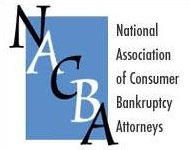Put off the division of community property in a marital dissolution at your peril.
Hesitate and you risk all of the community property being swept up in a bankruptcy by the other spouse.
And you’ll have little control where community property assets fall.

Community property is all in
The threat begins with the bankruptcy law provision that all the community property becomes “property of the estate” in a bankruptcy filing by one spouse. 11 USC 541. Not half, but all the community. And under California law, community property maintains its character until divided. McCoy.
So, even when the couple has terminated their status as spouses, the community property remains community until the division of property. As community property, it is vulnerable to a bankruptcy filing by either former spouse.
And then things get “interesting”.
Bankruptcy and community property
Bankruptcy law sucks all of a couple’s community property into the bankruptcy estate, even when only one of the spouses, or former spouses, files a bankruptcy case.
In return, all of the community creditors hold claims in the case and may be paid from the bankruptcy estate, regardless of which spouse incurred the debt.
Chapter 7 trustees are tasked with liquidating non exempt assets and distributing the resulting funds to creditors according to the priorities of the Bankruptcy Code, after payment of the expenses of administration. Those expenses include the trustee’s commission, the fees of his professionals, and any taxes incurred by the bankruptcy estate.
What’s lost when bankruptcy intervenes
Let’s look at the consequences of the marital community being sucked up into a bankruptcy of an estranged or STBX spouse. For simplicity, we’re going to assume the other spouse files a Chapter 7.
Automatic stay halts property division
A bankruptcy filing imposes a federal court injunction on actions to enforce a judgment against property of the estate or to take any action to obtain possession or control of such property.
Control of community property passes to trustee
The bankruptcy trustee assumes control over the property of the estate. While a trustee may not take physical control of the debtor’s assets, he is empowered to do so. He may shut down operating businesses and freeze bank accounts.
The trustee’s ultimate responsibility is to turn any non exempt assets into cash for the benefit of creditors. If there is unencumbered value in community property real estate, the trustee may sell the home to pay creditors and incur capital gains tax as a result.
Debtor controls exemptions
Exemptions define the assets that the debtor excludes from “property of the estate” and thus puts beyond the reach of the trustee. The debtor can choose between California’s two exemption systems, one of which applies exclusively in bankruptcy.
The importance of the choice of systems lies in the far more limited homestead exemption in the CA bankruptcy exemptions when compared to the classic exemptions that include the newly increased homestead exemptions.
While a provision of the California bankruptcy system (CCP 703.140) limits its use to situations where a non filing spouse has consented to its selection, no such protection appears to exist for a former spouse with an interest in undivided community property.
Undivided retirement assets in limbo
In the simplest Chapter 7 cases, retirement funds such as pensions and 401(k) plans are not property of the estate, and are free from claims of creditors. Individual retirement accounts are subject to a federal exemption in excess of a million dollars. 11 U.S.C. 522(n).
But a recent 8th Circuit case, Lerbakken, held that a debtor’s interest in his non filing former spouse’s IRA and 401(k) weren’t “retirement funds” in the absence of a QDRO. Thus the debtor’s right to those otherwise protected funds couldn’t be exempted as retirement assets, exposing them to claims of creditors. This is an issue to watch.
Reimbursement rights just another claim
Nasty things happen in bankruptcy to a spouse’s right to reimbursement for separate property contributions to a community assets.
The 9th Circuit held in Mantle, 153 F.3d 1082 that the non filing former spouse’s right to reimbursement was not a property right, but a debt. As a debt, the right to reimbursement was just another claim in the bankruptcy, to be treated no differently than the credit card debt.
Who pays post separation debts
Bankruptcy law does provide a tip of the hat to the marital property systems of community property states in the tangled terms of §726(c).
This distribution scheme is intended to parallel state law, but to the extent there are differences between the bankruptcy distribution scheme and state law, the state law scheme is preempted. 6 Collier on Bankruptcy *7 ¶ 726.05[1], at 726-19 (Alan N. Resnick Henry J. Sommer eds., 15th ed. rev. 2004). Martell, 349 B.R. 233 (Bankr. D. Idaho 2005)
Subsection (c) mandates the order of distribution in cases that include community property. In effect, four separate sub estates are created to deal with community claims and community property. Think of those sub-estates as accounts.
Without untangling some pretty opaque and little used provisions, the system created allows payment from community property of community claims incurred pre separation; then payment from the debtor’s interest in the community property of the debtor’s post separation debts. By CA statute, those post separation debts are not debts incurred during marriage for the purpose of the liability of community property.
While subsection(c) protects the interest in the non filing former spouse, its implementation usually requires the involvement of the non filer in the bankruptcy case to see that claims are properly divided between community claims and post separation claims.
Administrative costs shrink the community
The bankruptcy trustee and his professionals are paid first from the non exempt assets of the bankruptcy estate. While the trustee’s compensation is a declining percentage of the funds he distributes to creditor, bottoming at 3%, the fees of his professionals such as attorneys and accountants are limited only by the judgment of the bankruptcy judge who must approve them before payment.
Bankruptcy Code section 726(c) allows the court to pay the administrative expenses from community property or “as the interest of justice requires”. The non filer can argue for the exercise of discretion in payment of administrative expenses.
Thus we have a significant unknown as to the cost of the bankruptcy administration.
The estate is a separate taxable entity, so it may incur income taxes upon the sale of assets. Those taxes are paid first as an expense of administration.
How a final judgment fares
A bankruptcy filing by a former spouse where the community has been divided prior to filing yields a far different result. A final judgment in family court is entitled to res judicata effect (Paderewski) and isn’t subject to avoidance as a preference. Keller. It may, however, be subject to avoidance as a fraudulent transfer.
With the final division of marital property, the assets of the former spouse at the commencement of a bankruptcy case include only any former community property awarded to that spouse.
By California law, any former community property awarded to the nonfiling spouse is that spouse’s separate property and , as such, is unaffected by the bankruptcy filing of the ex.
The exception to this proposition is a division that constitutes a fraudulent transfer. Marital settlement agreements are not excepted from the more general provisions that prohibit transfers of assets that are actually or constructively a fraud on creditors. Roosevelt.
Make haste to divide the community
For all the reasons discussed above, the longer the marital community remains undivided, the greater the exposure to the chaos inflicted by a bankruptcy filing by one of the spouses. Take a page from a Navy SEAL commander:
In a special operations mission, the concept of speed is simple. Get to your objective as fast as possible. Any delay will expand your area of vulnerability. William H. McRaven
More
Claims between spouses: what are the bankrutpcy rules







